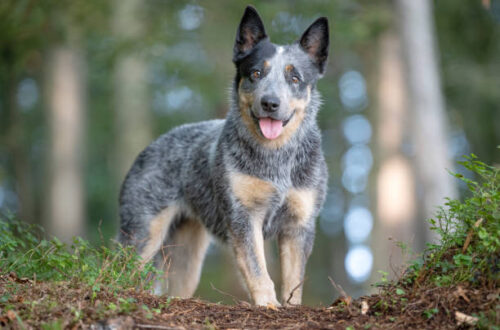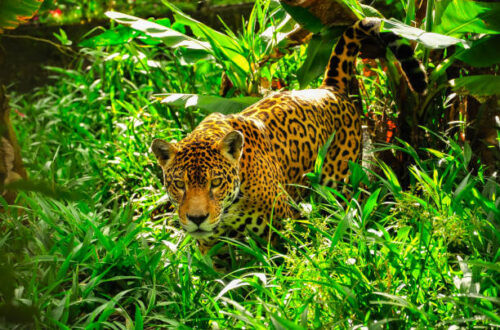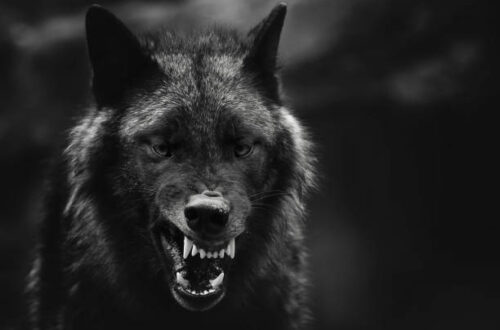We love our pets. They can be like family. We think of them as friends who give us love and maybe even play a little rough sometimes. But it’s important to know that any animal can be “dangerous” in some ways. This doesn’t mean they are bad, but we need to understand what can make a pet risky.
When we say “dangerous” about a pet, it’s not just about biting. It can mean many things. It depends on how the animal is built, what it naturally does, where it lives, if it’s sick, and how we treat it. Experts who study animals can help us understand these risks.
What “Dangerous” Really Means: It’s Not Just About a Bite
Experts who know a lot about animals say that “dangerous” isn’t just a simple yes or no. It’s like a scale with many things that can change it. Here are some of the main things they look at:
1. How They Are Built: Teeth, Claws, and Size
One of the first things to think about is how big an animal is and what it has to protect itself or catch food. Dr. Emily Carter, a vet who studies how animals act, says, “If an animal is big and has sharp teeth, strong jaws, or claws, it can hurt us more. A little dog bite might sting, but a bite from a really big dog can cause much more damage.”
Even small pets can be risky. Cats have sharp claws and teeth that can make deep cuts that can get infected. Some special pets, like certain snakes or monkeys, might be very strong or have ways to hurt like poison. We need to be careful with these.
2. What They Naturally Do: Their Wild Side
Even pets that live in our homes still have some of the instincts they had when they were wild. Dr. Mark Johnson, who studies wild animals and how they interact with people, says, “We’ve had dogs as pets for a long time, but they still have the urge to chase things or protect their space. Cats still like to hunt. Knowing what they naturally do helps us keep things safe.”
For example, a dog that likes to chase might hurt smaller animals or even people if we don’t train it well. An animal that protects its home might bite if it thinks someone is coming too close. We need to know what these natural behaviors are.
3. Where They Live: Stress Can Make Things Worse
The place where a pet lives and how it’s treated can change how it acts. Dr. Sarah Miller, who studies how to keep animals happy, says, “If an animal is stressed, it’s more likely to be mean. If they have too many other animals around, not enough toys, bad food or water, or no regular routine, they can get worried and act out.”
A pet that feels stuck, scared, or doesn’t have what it needs might bite or scratch to protect itself. We need to give them a safe and fun place to live.
4. If They Are Sick: Pain Can Change Behavior
If a pet isn’t feeling well, it can also be more likely to be “dangerous.” Dr. David Lee, a vet who knows a lot about how animals act, says, “If an animal is in pain, it might be grumpy and snap if you touch it. Sometimes, problems with their brain can also make them act strangely or aggressively.”
We need to watch for signs that our pet is sick or hurt and take them to the vet. This helps them feel better and keeps everyone safer.
5. How We Teach Them: Training and Getting Used to Things
How we raise and train our pets is one of the most important things. Anna Rodriguez, a dog trainer, says, “If we show young animals lots of different people, animals, and places in a good way, they learn to be okay with new things. If we teach them what to do using treats and praise, they learn to behave, and this makes them much less likely to cause problems like biting.”
If we don’t teach them well or if we punish them, they can become scared and might bite. We need to be patient and use kind ways to train them.
6. What Kind of Animal They Are: Some Things to Think About
The type of animal can also matter, but it’s not the only thing. Dr. Carter says, “Some kinds of dogs might have been bred to guard things, but a dog that is raised well is usually much safer than a dog that isn’t, no matter what kind it is.” It’s more about how we treat each animal.
7. Special Pets: Different Kinds of Risks
When we talk about special pets like snakes or lizards, the risks can be different. Dr. Johnson says, “Many of these animals still act like they would in the wild, and some have ways to hurt that are very strong. We need to know a lot about how to care for them and keep them in very safe places.”
Also, there are rules about owning some of these special pets, and we need to make sure we are following them.
Different Ways Pets Can Be “Dangerous”
It’s important to know that “dangerous” behavior can look different:
- Biting and Scratching: This is what we usually think of, and it can happen if a pet is scared, hurt, protecting something, or just hasn’t been trained well.
- Being Mean to Other Animals: This can happen if they are protecting their space, food, or if they haven’t learned how to get along with other animals.
- Breaking Things: If a pet breaks a lot of things, it might be stressed or bored, and this can sometimes lead to dangerous situations, like chewing on wires.
- Running Away: This is especially risky for special pets, but any pet that runs away can get hurt or cause problems.
- Spreading Sickness: Some animals can carry germs that can make people sick.
What Experts Say About Keeping Safe
Experts all agree that being a good pet owner is the best way to keep everyone safe. This means:
- Learning About Your Pet: Know what your pet needs and how it usually acts.
- Helping Them Get Used to Things Early: Show young pets lots of new things in a good way.
- Teaching Them Well: Use treats and praise to teach them what you want them to do.
- Giving Them a Good Home: Make sure they have enough space, toys, and what they need to be happy.
- Taking Them to the Vet: Keep them healthy so they don’t get grumpy from pain.
- Knowing How They Talk: Learn to see when they are scared or upset so you can help them.
- Keeping Them Safe: Make sure they can’t run away, especially special pets.
- Asking for Help: If you have problems with how your pet is acting, talk to a trainer or vet.
In Simple Words: Being a Good Owner Keeps Everyone Safe
Being a good pet owner means learning about your animal, being kind and patient with them, giving them a good life, and getting help if you need it. When we do these things, we help our pets feel safe and happy, and that makes them much less likely to be “dangerous.”
Simple Questions and Answers About Pet Safety
Q1: Are some kinds of dogs just born mean?
Experts say that how a dog is raised and trained is much more important than what kind it is. A dog that is loved and taught well is usually safe.
Q2: Can a small pet hurt me?
Yes, even small pets can bite or scratch, and these can sometimes get infected. We need to handle all pets carefully.
Q3: How can I tell if my pet might become dangerous?
Look for signs like growling a lot, showing teeth, acting stiff, or trying to get away. If you see these, give them space and try to figure out what’s making them upset.
Q4: What’s the best way to teach my pet to be safe?
Use treats and praise when they do what you want. Be patient and consistent. Don’t yell at them or hit them.
Q5: What if my pet bites someone?
Make sure the person is okay and get them help if needed. Keep your pet away from others. Talk to your vet to see if there’s a medical reason for the bite and maybe talk to a trainer to help with their behavior.
Q6: Are some special pets too dangerous to have?
Some experts think that certain wild animals don’t make good pets because they are hard to care for and can be very risky. It’s important to think carefully before getting a special pet.
Q7: What should I do if I’m scared of my pet’s behavior?
If you feel unsafe around your pet, talk to a professional trainer or a vet who knows about behavior right away. They can help you figure out what to do to stay safe.





